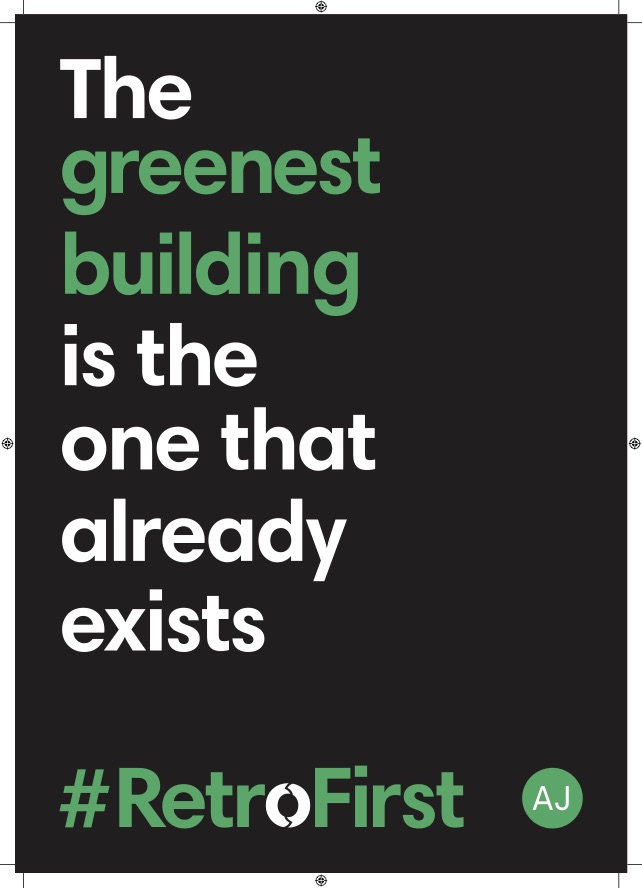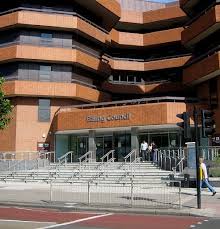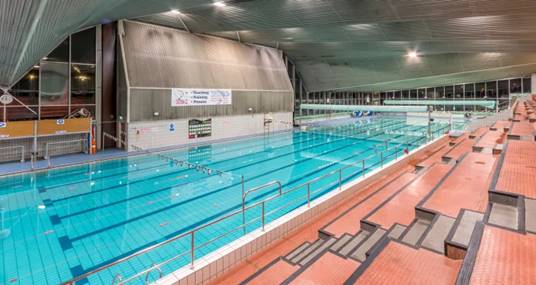
The London Borough of Ealing proudly proclaims leadership in the fight against climate change. In May 2020 it committed the borough to going carbon neutral by 2030. Missing from its rhetoric is any reference to the impact of the development boom they’ve unleashed in the past 10 years.
The Architects’ Journal’s RetroFirst Campaign
A campaign by the respected Architects’ Journal is highlighting the construction industry’s huge environmental impact. They show that the industry is responsible for:
- 35-40% of the UK’s total emissions
- almost all the planet’s carbon-hungry cement
- 50% of its steel production
- 25% of all plastics
Tearing down existing buildings and replacing them is particularly wasteful. Almost two-thirds of all UK waste is construction debris. More than 90% of the resulting waste material is recovered, but most is recycled into a less valuable material which means more carbon is spent manufacturing the new materials the new buildings require.
A Royal Institute of Chartered Surveyors report shows that 51% of the whole-life carbon of a typical new residential development is spent before it is even occupied. This means that it will take decades before any carbon debt is repaid with efficiency savings over the buildings it replaced. And these are the decades when carbon must be most sharply reduced.
The Architects’ Journal campaign is very clear .
‘Replacement of a large building every 30 years or so must entail considerably more energy than maintaining a building that lasts for centuries … reusing an existing building and upgrading it to be as efficient as possible is almost always the best choice regardless of building type and climate.‘
Faced with these facts, the Journal urges us to ‘think reuse first, new build second’.
So How Is This Relevant To Ealing?
If the embodied energy savings from repurposing existing buildings is so much better than the ultra-high embodied energy costs of demolition and rebuild, Ealing hasn’t noticed. From any number of examples of its preferred demolish and rebuild approach here are just three.

Perceval House
Ealing is pressing ahead with its plans to demolish the Council Offices at Perceval House which were built less than 40 years ago. While no survey work was done, Cabinet was told in 2015 that much of the building’s ‘electrical/mechanical services such as air conditioning, lifts, plumbing etc. are coming towards the end of its life and it is also quite energy inefficient’. This meant that it ‘may require significant expenditure in the next 10-20 years to keep it functioning’. This was sufficient to justify its demolition and replacement with new Council premises. Options for refurbishing the building and possibly repurposing it remain unexamined in any of the information released to the public.

Gurnell Leisure Centre
Gurnell Leisure Centre tells a very similar story. Built in 1981, the Council is writing off the borough’s popular and most heavily used leisure facility as a ‘dinosaur on its last legs’. We’re told that ‘the centre today is a tired and dilapidated building, of its time and no longer fit-for-purpose, limiting the opportunity for future generations.’ … Gurnell ‘is in need of a significant level of repair and investment and is near the end of its operational life’. … ‘Refurbishment would likely cost around 80% as much as providing an entirely new facility.’
And that’s all we know. A lengthy Environmental Assessment screening opinion prepared by the Council omits the embodied energy question entirely. For a Council as keen as Ealing is to address the climate change challenge it’s quite an oversight.

Friary Park
It’s not just Council facilities that are subject to this slash and burn approach. Great swathes of the borough’s housing are being replaced by large blocks of flats too. A good example is Friary Park in Acton, which was built for private sale in the late 1980s. Friary Park is an attractive low-rise residential estate. It was completed at a time when private demand for new homes was low, so a social landlord acquired it as a whole. On the basis that the homes were poor quality, poorly insulated and without adequate heating, consent was granted in 2019 for their comprehensive demolition and replacement with blocks of flats.
The planning officer’s report on the development extolled the energy efficiency of the new flats claiming a ‘44% improvement on the baseline reduction in carbon emissions’. There was no recognition of the Architects’ Journal’s claim that over half of the whole-life carbon use of the new development will be expended even before the new flats are first occupied. Had this calculation been done might the report have concluded that refurbishment of the existing estate would have less of an impact on the climate ?
Time to get serious about climate change
The Architects’ Journal’s shows that the replacement of a large building every 30-40 years consumes considerably more energy than maintaining one for centuries. But as the complexities of embodied energy are hard to compute, it too easily escapes consideration.
This has to change. The Architects’ Journal’s well-evidenced campaign shows that the impacts of the slash and burn approach to managing our urban areas is not sustainable. More dutiful stewardship of the built environment has to play a central part in the fight against climate change. Through its ‘whole-life carbon assessment flowchart’ the RICS report provides a methodology for assessing the environmental impacts of redevelopment. If Ealing Council is serious about becoming carbon neutral by 2030, it must recognise this and start using the tools our professional bodies are developing in their planning decisions.

